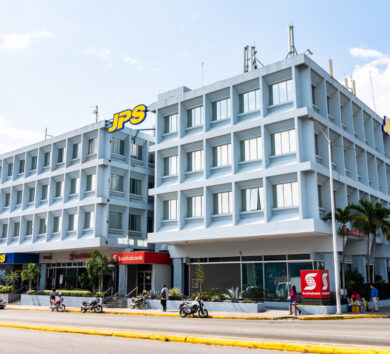

The Jamaican Government on Monday, July 1, announced that a hurricane watch is now in effect as
Hurricane Beryl ravaged its way through the Windward Islands and entered the Caribbean Sea.
At the start of the year’s seventh month, Hurricane Beryl is a monster of a storm, clocking in at category 4 on the Saffir-Simpson scale.
It has sustained winds of 140 miles per hour, with gusts in the heart of the cyclone estimated at 150 miles per hour. It is capable of major storm surges and copious amounts of rain, which also run the risk of severe flooding.
Already, the effects of Hurricane Beryl are being seen, with the Grenadian islands of Carriacou and
Petite Martinique suffered severe to catastrophic damage. It was there that the storm would make
landfall, and here the worst Beryl seemed to offer would present itself.
Already, just mere hours after the fact, terrifying reports are coming in about the horrific destruction the storm was leaving in its wake. All electricity and nearly all communications in Carriacou have been lost, with accounts of several roofs being detached from their houses also being widespread.

This damage is not just limited to the eye of the storm. Both Barbados and Tobago, supposedly
facing the more outer bangs of Beryl, have also reported major flooding and the like.
Now, as Beryl finishes savaging the Lesser Antilles, she has begun to make her way westward. Though her current power in category four is expected to weaken as she traverses the Caribbean Sea, her gun remains aimed almost dead set on Jamaica.
On the surface, Jamaica seems to be no stranger to hurricanes. The nation has had a history of dealing
with such storms and persevering even in the face of adversity. The 2012 ‘Superstorm Sandy’ made
landfall first in Jamaica before going on to devastate the Eastern Seaboard of the United States.
The 2007 season brought Hurricane Dean, with Hurricane Ivan occurring in 2004. Going even further back in time, 1988 involved the infamous Hurricane Gilbert, with 1951 seeing the arrival of the also deadly Hurricane Charlie.
All of these cyclones would do tremendous damage and be the most devastating the island has suffered to date. There had been other close shaves and near misses with tropical cyclones during this period, but the aforementioned cases are the ones that had a major impact on Jamaican lives, property, and psyche, with the impact being felt and remembered even in the present day.

It is these hurricanes that are still remembered and spoken about with such awe and reverence. As for the other storms, it was not impossible for a hurricane to come within close range and yet leave the country almost unscathed.
For example, Hurricane Iris in 2001 would destroy only two houses and otherwise be entirely negligible. And so, like many others, it would be lost to time and made irrelevant. Ever since Hurricane Sandy in 2012, Jamaica has been blessed with not having to experience any major hurricanes.
However, this was not due to a lack of storms. The effects of climate change have rarely been more apparent than during the past few hurricane seasons. Not only has the number of storms increased, but so too have their size, intensity, and speed. The 2017 hurricane season, for instance, would see the infamous trio of Irma, Maria, and Jose.
In 2020, the frequency of storms had been so great that six auxiliary names had to be provided for the last half-dozen. Now, in 2024, Hurricane Beryl has made history by being the earliest major hurricane ever in the Atlantic, reaching Category 4 strength in June instead of the usual time of major hurricanes: August, September and October.
Jamaican people are very individualistic and, at times, can be quite self-centred. In spite of the power
and frequency of hurricanes, we have reached a point where many seem to think the nation
almost has an aura of invulnerability; that what has happened to our brothers and sisters in the Caribbean could never happen to us. It is hard to say when this first started, but it can possibly be
traced back to Hurricane Matthew in 2016.
Hurricane Matthew had been able to power up an insane Category 5 storm in the central Caribbean
and was set by all meteorologists to be on a direct course for Jamaica.

The impending arrival of the storm heralded a moment of hysteria among the populace, with the supermarkets all being emptied of their goods, day-to-day activities drawing to a halt, and paranoia about the oncoming deluge nearly consuming everything and everyone. And then, at the last minute, it seemed as if prayers were answered, with Hurricane Matthew making an abrupt 90-degree angle and slamming into Hispaniola instead, sparing the island.
As mentioned earlier, the last major hurricane to do significant damage to Jamaica was Hurricane
Sandy in 2012, and there is the problem. The current modern generation does not have much first-hand
experience with hurricanes, and as such has not developed a healthy respect for and fear of their power.
Based on experiences like Hurricane Matthew, the youth have begun to treat the whole affair partly as a
joke, and then it’s almost as if it’s an exciting movie, as they can watch other nations suffer the impact of
hurricanes while they are spared.
I cannot recall how many times I have seen the young joke about how ‘Haiti will absorb what was meant
for Jamaica’, or that ‘The aura of the country is enough to force hurricanes away’. I myself have played a small part in this phenomenon and seen it spread. The youth were either too young to really grasp the
importance of hurricanes or missed it entirely.

Much of the older generation knows better, and they have helped meticulously to ensure that should the
worst occur, Jamaica is somewhat ready. The buildings of the country have been built for such natural disasters, the military trained in the art of first responses, and countless advertisements and promotions attempting to highlight the potential risk.
However, all of this will do little and less for the young who continue to remain wilfully ignorant and complacent. And so, as Hurricane Beryl approaches our footstep, I am of the opinion that its appearance may actually be a net gain for the country.
As the age-old saying goes, ‘if you don’t hear, yuh a go feel’. By the time the storm arrives in the vicinity of the country, it is expected to significantly weaken from a Category 4 to a Category 2 storm.
If this remains the case, I think Beryl is a perfect opportunity for Jamaica to once again come to grips with the prospective dangers of hurricanes, being one large enough to startle and sting but not strong enough to cripple or kill. Sometimes it takes a slap in the face to wake someone up.







Comments